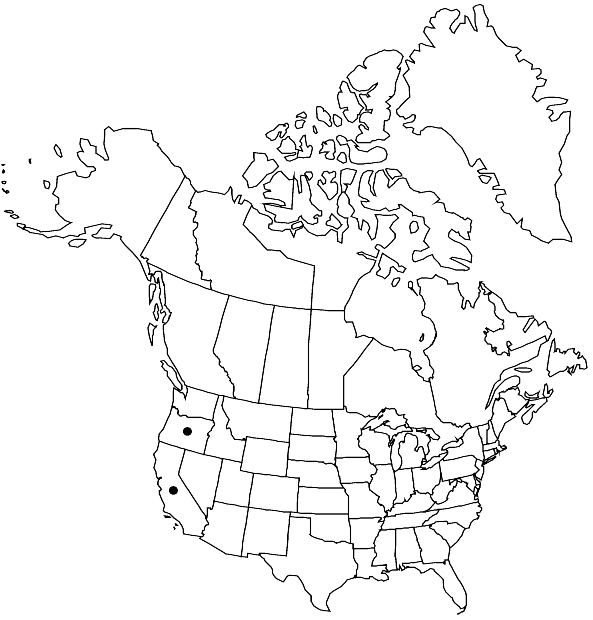Entosthodon californicus
Bryologist 58: 13. 1955,.
Plants 1–2 mm, dull yellow green. Leaves contorted and crispate when dry, oblong to oblong ovate, imbricate, concave, mostly about 1 mm; margins entire and not bordered; apices broadly acute to rounded, often with a 1–2-celled apiculus; costa ending 4–6 cells before the tip; basal laminal cells rectangular (50–70 × 15–22 µm), distal cells nearly quadrate. Seta brownish yellow, 4–6 mm, not hygroscopic. Capsule ovoid-pyriform, the apophysis forming about half the length, 1.5–2 mm, somewhat sulcate when dry and empty; exothecial cells thickened, narrowly oblong and transversely elongate in 7–9 rows proximal to the mouth; operculum short convex-conic; peristome yellowish brown, lanceolate with trabeculae, papillose basally and nearly smooth at the tips; endostome segments shorter that the teeth, papillose. Calyptra cucullate, long-beaked, inflated around the capsule, large, smooth. Spores 15–18 µm, bacculate-insulate.
Habitat: Along streams or roadsides on exposed fine sandy soil
Elevation: moderate elevations
Discussion
Selected References
None.
